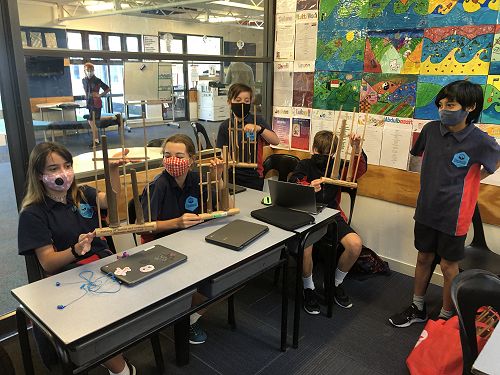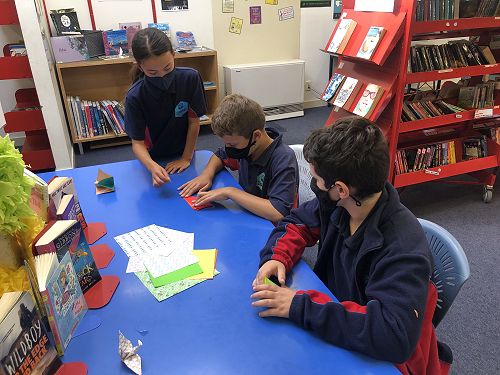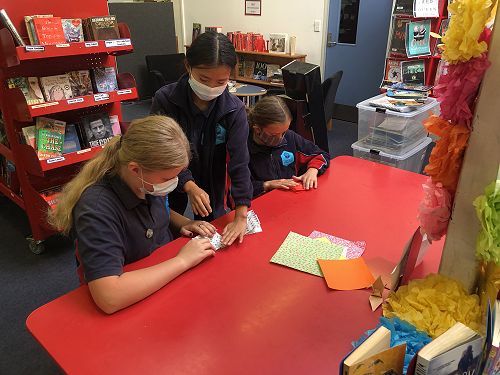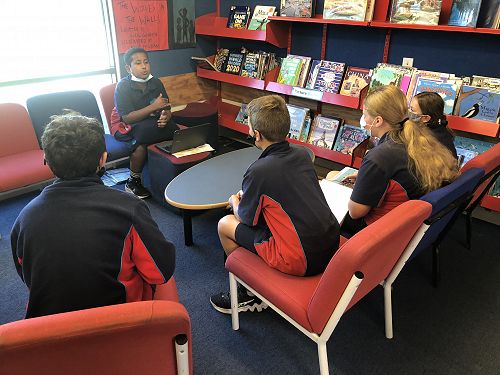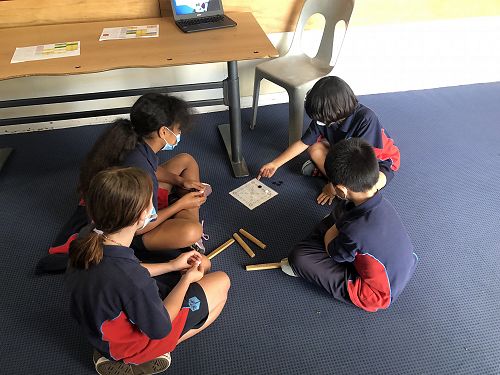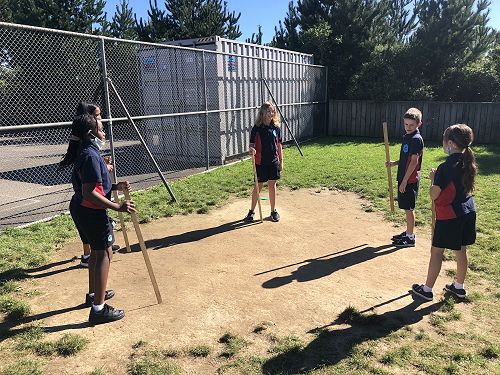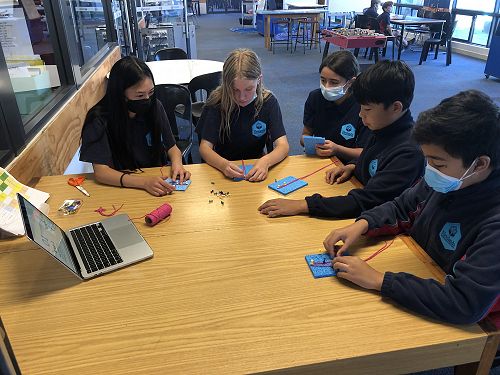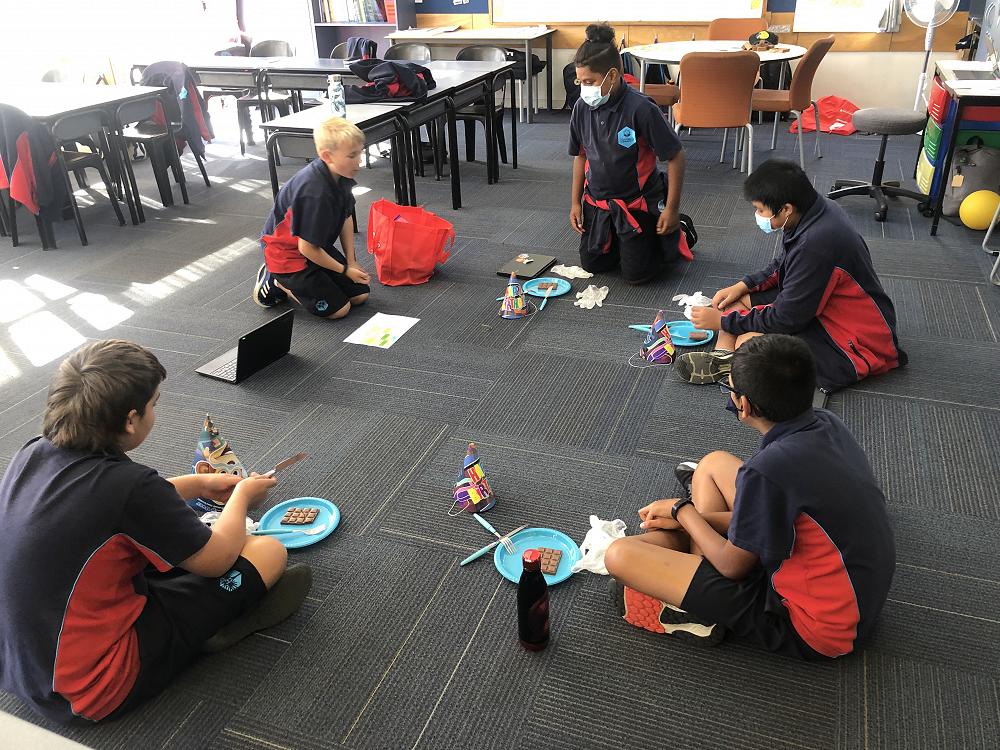
Kō Wai Mātou
Students take the lead in the classroom
YUT NORI
During Term 1, Room 7 students worked hard on their Kō Wai Mātou projects. Each student had to pick something from their culture to teach Ngā Wawata students. The first thing we did was plan what part of our culture we would teach. I am from South Korea. My final options were teaching the hangul alphabet, hanbok, (traditional dress), tteokbokki, (traditional street food), and Yut Nori, (a traditional board game). I picked ‘Yut Nori’ because I thought it would be really engaging. We had to work on our presentation and bring in any materials we needed. Afterward, we got to practise in front of students from our class and get feedback from them. I realised that my lesson was too long and that I didn’t explain the board game correctly so I removed some parts of my slide and added a slide explaining the rules more concisely. A few days later it was time for our real lesson. We had to go into an area in the school and wait for our audience. It was really fun to teach them and I could tell they enjoyed the lesson. Overall it was a really good experience for me because it was my first time teaching something from my Korean culture to my peers.
Written by John Lee
TIMKET
Room 7 worked on Kō Wai Mātou projects in term 1. Our goal was to successfully teach a couple people from our Ngā Wawata members, about our culture. My ethnicity is Ethiopian. I picked Timket to present to my class, which is an Orthodox Christian festival about Jesus Christ's baptism in the Jordan River. I believe we all met our objectives. My goal was to speak without being shy, and to make my presentation lively and enjoyable. I believe I accomplished this because I saw smiles and competitive work from my audience. The planning procedure was the most difficult part and time-consuming because I had to keep bugging my parents for information. We had a practice presentation day in front of our class before presenting in front of our syndicate. We split up into groups and listened to each other's lessons and filled out feedback forms for them. My group suggested adding a quiz at the end so it would be more enjoyable. I thought it was a good idea because the first part was just a boring speech. By adding a quiz the people in my group would get a boost of confidence and it would be more engaging. Students in my group were excited and concentrated hard so they could win a lollipop. They were locked-in and focused and that's what made me proud. I now know more about my culture and I'm very proud of it.
Written by Yonas Mekonnen
GERMAN BIRTHDAY TRADITIONS
Weeks ago, my teacher assigned us a task for our Kō Wai Mātou project. We had to do some research, planning, and preparing for week nine, which is the week we had to present something about our culture to 4-5 students from our syndicate. I found out that no-one has the same culture as me which is German. I was thinking of doing a board game where students would learn facts about Germany, however, I didn't do that. Instead I chose to teach traditions of German birthdays. I made a slide explaining the important birthdays in Germany, the facts about these, and the food that would be eaten at birthdays. I think my group's favourite thing was when I presented the chocolate game and showed them how to play it. When I did the practice, I really didn't want to do it because I don't like sharing ideas or presenting stuff to people, even if they’re my best friend. So it took a lot of guts for me to do it. After I did the practice, I felt a bit more comfortable speaking out loud. I also got feedback from my peers telling me to practise my voice and to be more enthusiastic. During the real presentation I got nervous but I didn't show that I was scared. I did a really good job. My favourite bit was watching my groups eating the chocolate fast. It was quite funny.
Written by Leo Smith-Rennwandt
JAPAN & THE ORIGAMI CRANE
Recently, we did a Kō Wai Mātou project in Room 7. Our goal was to successfully teach eight students from our team in Ngā Wawata, something about our culture. Sarah and I are both Japanese so we decided to teach our audience about the history and construction of the origami crane. I think we achieved our goal. The planning process took the longest. We had to find information about our topic and start practising the construction of origami cranes. Two weeks to go and we had the opportunity to present in front of a small group of our classmates. We split up into groups and listened to each other's lessons and completed feedback forms for them. After the practice presentation my butterflies started flying away. I felt a lot more confident about the presentation and was actually really excited. On the day, everyone, (well mostly everyone) listened well and managed to make an origami crane. It was quite hard to teach because some of our students were not precise with their folding, however, the practising paid off. I now know the pain and the delight of being a teacher. I rate this experience a 10/10!
Written by Mei von Dadelszen
CHINESE GOOD-LUCK KNOT
Not long ago, Room 7 decided to create a Kō Wai Mātou presentation about something from our culture. Because I’m Chinese, I did something Chinese. Planning different ideas, I tried to find the most engaging and fun one. Out of the three ideas that I had, I chose how to make a Chinese good luck knot. Since I wanted people to know about the history of it, I did some research and found out that they dated back 100,000 years! I also wanted to keep my audience’s attention so I kept my dialogue short. At home I made sure that the lesson fit into the time frame of 15 minutes. Luckily, the only thing I needed to shorten was the slide so I just deleted some of these and condensed a couple of sentences. On the day of the presentation to Nga Wawata students, the first group didn’t completely finish so for the second group I set the first step up for them in advance. The second group was easier to teach but most of them didn’t get the instructions very well so, if I could do this again, I would make the instructions more clear.
Written by Hannah Zhang
Gallery
